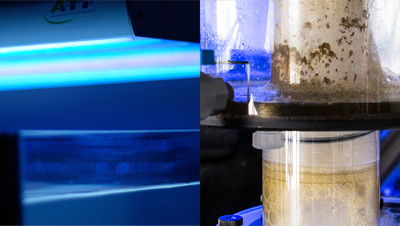Keeping a marine aquarium healthy and thriving requires a significant level of maintenance. For the most part, we hobbyists are pretty good at tackling chores in a timely manner, but in some cases we’re a little more prone to procrastination—usually in situations where “out of sight means out of mind.”
Here are 5 critical marine aquarium maintenance chores that are all too easily overlooked but can have a dramatic impact on the health of your livestock, the functional life of your equipment, and/or the enjoyment you derive from your system:
1. Cleaning the neck of your protein skimmer
No one likes to touch that grimy, slimy, stinky coating that accumulates around the neck of a protein skimmer, but don’t postpone this important task! That nasty buildup of gunk is not only unsightly, but it also greatly impedes your skimmer’s foam production, which, in turn, greatly reduces the collection of skimmate. Simply wiping the neck clean as often as needed—at the very least, once a week—is the best thing you can do to keep your skimmer functioning at peak efficiency.
2. Cleaning pumps and powerheads
Pumps and powerheads are essential elements of a marine aquarium’s “circulatory system” that quietly (or sometimes not so quietly) go about the business of creating currents and moving water wherever it’s needed. But over time, these pumps can become clogged with coralline algae, sponges, vermetid snails, etc. to the point that their output can drop dramatically or they stop working altogether.
Since much of this fouling occurs out of sight within the pump housing, it often goes unnoticed until water movement has slowed to a crawl or the pump won’t restart after being unplugged. Pumps should be disassembled and cleaned (e.g. using white vinegar) about once every two months—at the very least once per quarter.
3. Rinsing mechanical filtration media
Keep in mind that filter socks, foam blocks, sponge sleeves, and other mechanical filtration media simply trap and sequester suspended solids. They don’t remove them from the system. So, it’s critical to rinse these on a weekly basis to eliminate the trapped debris before it has a chance to decompose and pollute your water.
4. Basting your rockwork
Even in systems with excellent water movement, detritus tends to get trapped in the rockwork and around corals over time. To prevent excessive detritus buildup from getting out of hand and causing algae or water-quality problems, it helps to get in there every so often with a turkey baster or small powerhead and squirt loose any trapped detritus so it’s easier to siphon out. However, if you do use a powerhead for this chore, you must be careful to avoid toppling or damaging any corals in the process.
5. Replacing light bulbs/tubes
If your lighting system includes fluorescent or metal halide lamps, be sure to replace them according to the manufacturer’s recommended schedule. As these lamps exceed their functional life, their output will gradually decline to the detriment of your corals, and if you wait too long to replace them, the corals will then be photoshocked by the sudden increase in light intensity. Unfortunately, this shift in output isn’t visible to the naked eye, so it’s important to keep a record (e.g., on a calendar or in an aquarium log) of when you last replaced the bulbs/tubes.
What would you add to this list?
Okay fellow salties, I’m sure I’ve overlooked a point or two that should be on this list. If you can think of any to add, let us know in the comment section below.



